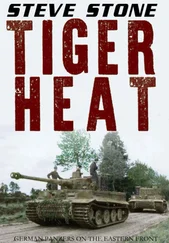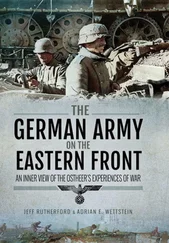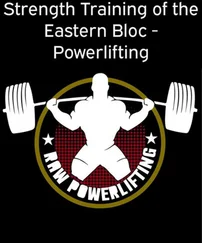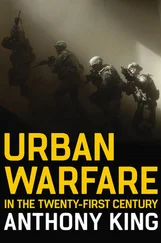One of the prime reasons for this casual German attitude to tank development was that the OKH assumed that the Soviets were not capable of producing anything that could match German tanks. German technical exchanges during 1929–33 assessed Soviet tank technology as primitive and failed to detect the implications of the First Five Year Plan for Soviet tank-manufacturing capabilities. The Abwehr, German military intelligence, had very little insight into the Soviet Union and consistently underestimated the quantity and quality of Soviet tanks. Hitler, who was hell-bent on destroying the Soviet Union, accepted the Abwehr’s flawed estimates of Soviet combat capabilities, since they were in line with his innate prejudices against Slavic culture and Communist ideology.
Despite a huge Soviet lead in doctrinal and technical developments in armour, Stalin squandered much of this advantage with his officer purges of 1937–41 and the abandonment of Deep Battle doctrine. Egged on by the NKVD, Stalin became convinced that mechanization and the desire for an independent tank force was a conspiracy by Tukhachevsky and his reformers to create a ‘state within a state’ in order to wrest control of the military from the Communist Party. Although the subsequent Stalinist purges of the Red Army are often cited as weakening the leadership cadre of the armed forces, it is less often noted that the purges specifically targeted the new mechanized units and the tank design bureaux that supported them. Kassian A. Tchaikovsky, commander of the 11th Mechanized Corps, was one of the first arrested and he died in prison. Marshal Tukhachevsky was executed in June 1937, followed by Sedyakin and Khalepsky in July 1938. Gregory Isserson managed to avoid arrest in the first round of the purges, but was arrested in 1941 and spent the entire Second World War in a labor camp. The NKVD then moved on to persecute the engineers building the tanks: Chelpan, developer of the V-2 diesel tank engine, was executed in March 1938, and the heads of the KhPZ and SKB-2 design bureaux were also executed. The purges continued from 1937 and extended for four years and continued even after the onset of Operation Barbarossa, claiming still more victims, including Pavlov. In addition to the elimination of Tukhachevsky and most of the higher-level tank leadership, the PU-36 Field Regulations and its doctrine of Deep Battle were suppressed. Further adding to the self-gutting process, Stalin ordered the disbanding of the mechanized corps in November 1939. This dealt a devastating blow to the Red Army’s surviving tank forces, which greatly reduced their combat effectiveness for several years.
However, the Wehrmacht’s stunning victory over France in June 1940 caused Stalin to reconsider, and he ordered the re-formation of eight mechanized corps in July 1940. This about-face only provided further organizational and training confusion for Red Army tankers and the new mechanized corps would not be able to participate in large-scale maneuver training until the late summer of 1941. Furthermore, Deep Battle was not reintroduced as official doctrine, so it was unclear how the new mechanized corps would be employed. In contrast, most German tankers had gained valuable combat experience in the Polish, French and Balkan campaigns, and their maneuver-warfare doctrine had crystallized by June 1941. Whereas the largest German armoured formations in the Polish Campaign had been two corps-size formations with only a single panzer division and two motorized infantry divisions each, in the Western Campaign the Wehrmacht had fielded Panzergruppe Kleist with five panzer and three motorized infantry divisions. By June 1941, it had become standard practice for each German army group to have at least one Panzergruppe to lead its schwerpunkt (main effort) and rather than breakthrough attacks, the panzer divisions sought to conduct slashing pincer attacks that resulted in encirclement or kessel battles. The only positive Soviet combined arms experience to balance against this German tactical and operational skill was Georgy Zhukov’s victory over the Japanese at Nomonhan in August 1939, but only a handful of Soviet tank units had been involved.
By June 1941, the Wehrmacht held a clear advantage over the Red Army in terms of practical combined arms experience, which helped to conceal the technical limitations of German tanks.
Tanks are complex weapon systems that require a number of sub-systems and the crew to function properly in order to provide the vehicle with its key characteristics: firepower, protection, mobility and communications. Tank crews vary in size, with 4–5 being the norm for a full-strength crew, but combat and noncombat casualties (as well as disease and sickness in winter months) could reduce crews. It is essential that each member of the crew perform his designated task well for the tank to achieve its full capability. A poorly-trained loader might be the lowest man in the tank crew hierarchy, but his inability to reload main gun rounds quickly in combat could easily lead to his tank losing a gunnery duel against a faster opponent. Likewise, the driver’s ability to maneuver over rough terrain and use cover and concealed approaches is critical for the crew’s survival. In June 1941, most Soviet tank drivers – particularly in battalions equipped with T-34 and KV-1 tanks – had very little practical experience, whereas the majority of German tank drivers had one or more campaigns under their belts. German tank driver training was also very thorough for new recruits, whereas this continued to be a weakness for the Red Army well into 1942.
The foremost fact of life as a tanker is the importance of maintenance and logistics. The track system and roadwheels take a great deal of abuse from large rocks, tree stumps and other assorted battlefield wreckage when the tank moves any significant distance. The track, held together by long pins, wants to fall apart and the crew must constantly monitor it for signs of damage. Most tanks carried a few spare track blocks, but extra track pins to hold them together were often scarce. Good crews check the track and roadwheels at every halt of more than a few minutes and conduct spot-tightening. If they fail to do so, crews can expect to routinely throw track (i.e. the track comes off the roadwheels), which immobilizes the vehicle. In tank platoons and companies, it is imperative that junior leaders force tank crews to conduct routine maintenance – even in extreme cold weather, muddy field conditions and during combat operations. Friction is a tank’s worst enemy and river crossings tend to wash grease out of fittings on the running gear, which can cause roadwheel hubs to burn out if not tended to soon after fording. For example, a T-34 required a minimum of 1kg of grease for each 100km the tank moved on dry surface, but this would need to be replaced sooner if water obstacles were crossed. All tank engines and transmissions leak oil to some degree, particularly as filters and gaskets wear out.
German tank engines often relied on rubber gaskets, which were prone to brittleness in the frigid Russian winters, leading to massive oil leaks if not promptly replaced. Turret systems including hydraulic reservoirs, optics and radios needed to be checked as well and the main gun needed to be bore-sighted again (usually by using string across the muzzle and a snake board target) after any significant move or firing. If the optical telescope and main gun went out of alignment due to hits on the turret or a very bumpy ride, then the tank’s gunner would have a difficult time hitting targets. On a weekly basis, crews needed to check the engine and transmission for wear (often detected by tiny metal shavings in the engine compartment, indicating excessive wear), as well as the batteries, leaf springs or torsion bars and brake systems. Contrary to photos depicting the ‘difficulty’ of panzer crews in cleaning the gun tube with a cleaning rod (a five–ten-minute job), one of the worst tasks was replacing a snapped torsion bar, which necessitated pulling off multiple road wheels and plenty of sledgehammer work to get the broken pieces out (in typical field conditions, a four–six-hour job). If tanks were driven with one broken torsion bar, the shifting weight would likely break the next torsion bar as well. Both sides often pushed their tanks to operate in ‘degraded mode’, with broken or worn parts, but tanks in this condition were often little more than placeholders with decreased combat value. The most important vehicles at the tank battalion level are the recovery vehicles and fuel trucks, which are essential to keeping the unit functional.
Читать дальше
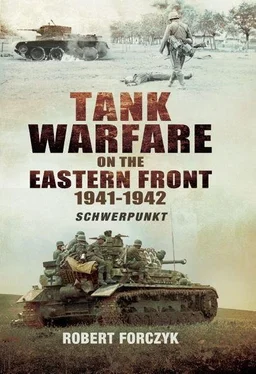

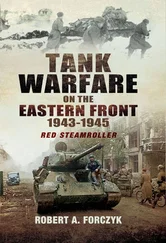
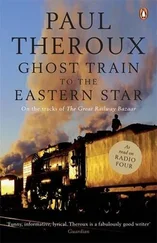
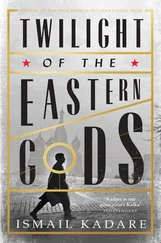
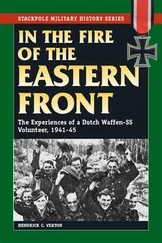

![John Stieber - Against the Odds - Survival on the Russian Front 1944-1945 [2nd Edition]](/books/405234/john-stieber-against-the-odds-survival-on-the-russian-front-1944-1945-2nd-edition-thumb.webp)
